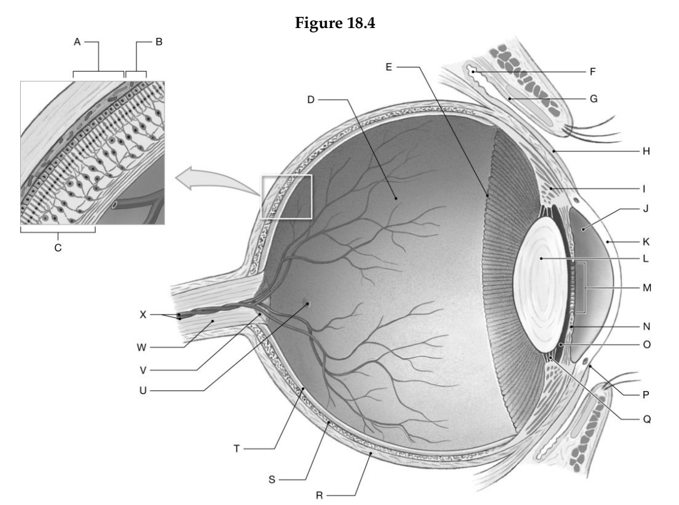Injury to the visual cortex of the right occipital lobe can cause
A. partial blindness in the right eye only.
B. total blindness in both eyes.
C. total blindness in the left eye only.
D. partial blindness in both eyes.
Answer: D
You might also like to view...
Using the figure above, identify the labeled part.

1. Label A: ______________________________
2. Label B: ______________________________
3. Label C: ______________________________
4. Label D: ______________________________
5. Label E: ______________________________
6. Label F: ______________________________
7. Label G: ______________________________
8. Label H: ______________________________
9. Label I: ______________________________
10. Label J: ______________________________
11. Label K: ______________________________
12. Label L: ______________________________
13. Label M: ______________________________
14. Label N: ______________________________
15. Label O: ______________________________
16. Label P: ______________________________
17. Label Q: ______________________________
18. Label R: ______________________________
19. Label S: ______________________________
20. Label T: ______________________________
21. Label U: ______________________________
22. Label V: ______________________________
23. Label W: ______________________________
24. Label X: ______________________________
In general, activating a slow-oxidative motor unit in a muscle will generate more tension than activating a fast-glycolytic motor unit
Indicate whether the statement is true or false.
Which cranial nerve is chiefly responsible for eye movements?
A. Olfactory B. Facial C. Hypoglossal D. Oculomotor
Management of renal failure involves restriction of water, salt, and protein intake. This approach helps to lessen the strain on the urinary system by
A) maximizing the volume of urine produced. B) preventing any increase in blood plasma pH. C) preventing the generation of large quantities of nitrogenous waste products. D) regulating daily caloric intake. E) preventing the excretion of any organic waste products.